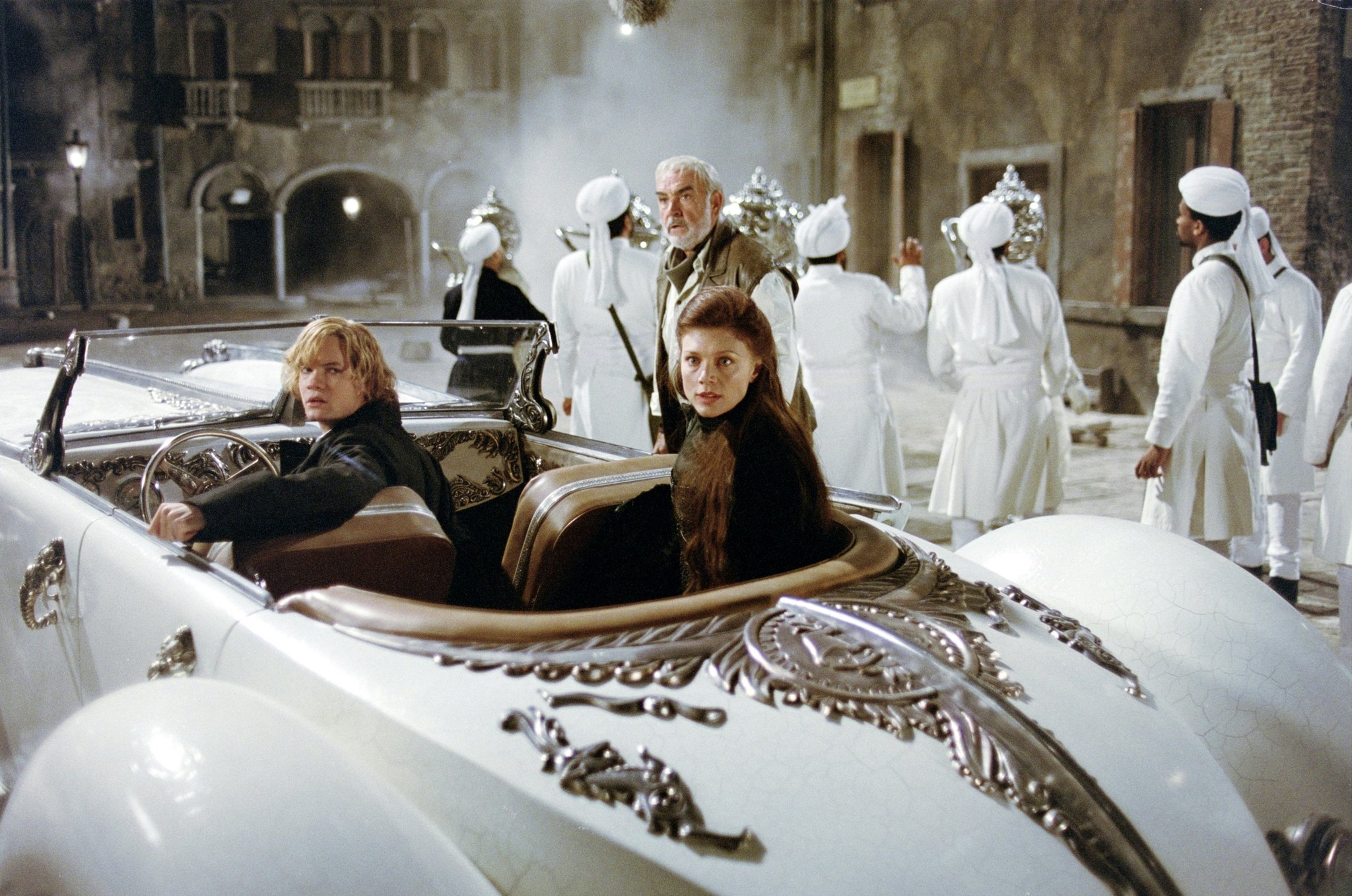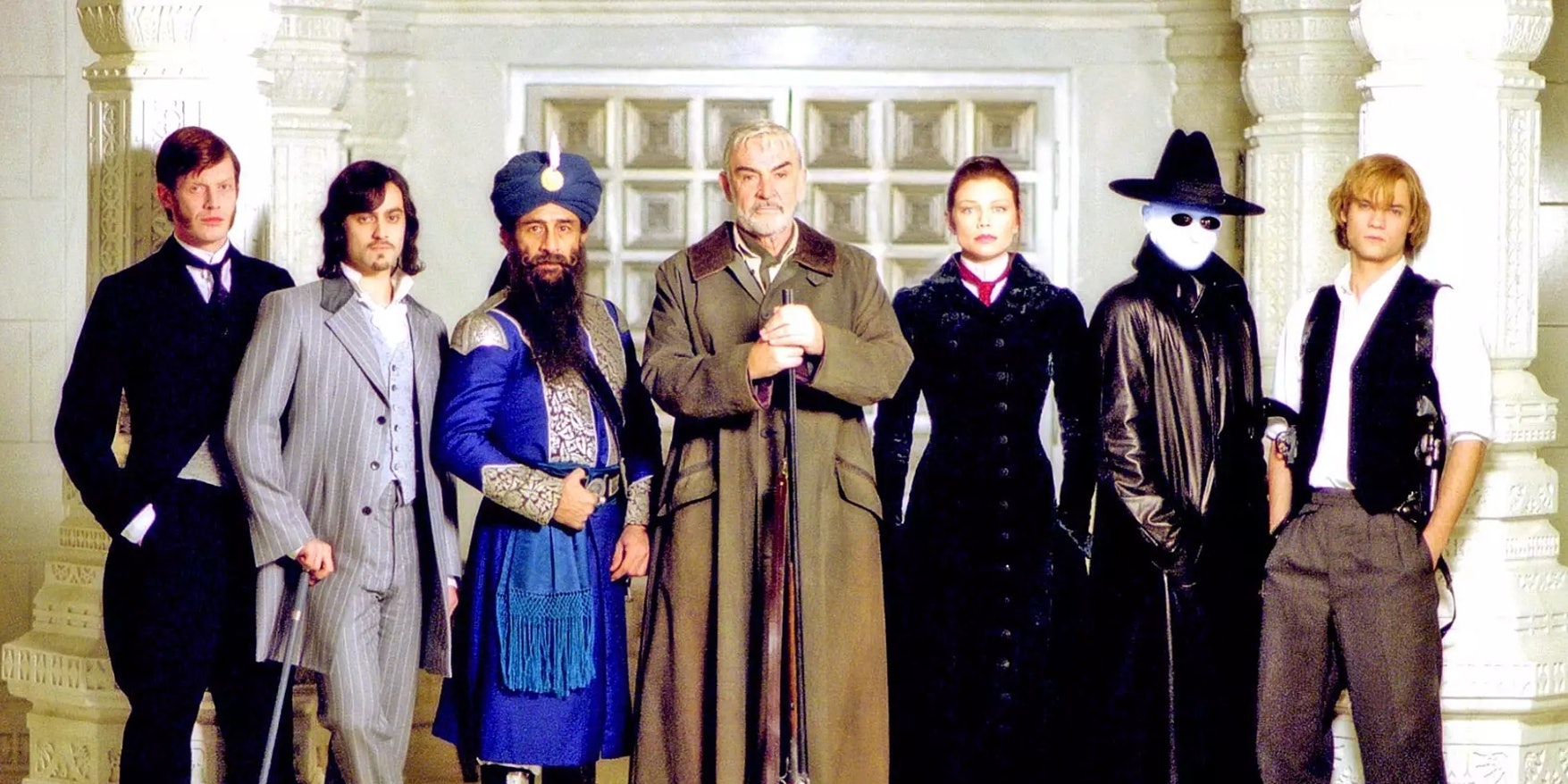
Superhero blockbusters may or may not be in crisis. In 2023 alone, Across the Spider-Verse gained extraordinary acclaim while The Flash met the opposite reaction. This polarized reception, and the underperformance of other films and shows, suggests that Marvel and DC’s box-office dominance is in question, with the long-prophesized phenomenon of superhero fatigue finally coming to pass.
This makes it the perfect time to go back 20 years and revisit a comic book movie with problems that mirror those faced by modern, cameo-heavy crossover stories. That movie is The League of Extraordinary Gentlemen, which should be recognized as a cautionary tale.
Adapted from Alan Moore and Kevin O’Neill’s comic by Blade’s director Stephen Norrington, The League of Extraordinary Gentlemen envisions a world where all works of fiction are real and coexist. An array of characters taken from Victorian literature — from Mr. Hyde and the Invisible Man to Dracula’s Mina Murray — are assembled by the British government to combat a villain seeking to plunge Europe into war. Despite financial success, LXG (as the movie’s advertising insisted would catch on) was critically panned, disavowed by Moore and O’Neill, and helped prompt Sean Connery’s retirement.
LXG has plenty of strong points. The practical effects and production design associated with Captain Nemo, especially his elaborate six-wheeled car, are fantastic. The cast also tries its best, even if the script seems to have a grudge against Stuart Townsend, whose character is made to deliver increasingly atrocious one-liners. After stabbing a woman, he quips, “I’d hoped I’d get to nail you one more time.”
Moore and O’Neill’s comic is inherently hard to adapt. It’s exceptionally referential, with every panel so packed with details there’s a website dedicated to decoding its Easter eggs. The script excises most of these and, because 20th Century Fox didn’t own the film rights to some of the comic’s characters, makes major narrative changes. LXG’s plot is often confusing — the villain’s true identity barely gets explained — and lacks the comic’s distinctive style.
An identical problem affects the visuals. Blade proved that Stephen Norrington could direct compelling scenes, but LXG, hampered by studio-mandated changes and on-set conflict, features muddy visuals and dubious early-2000s CGI.

By trying to rework an unconventional and adult narrative into a family-friendly product, LXG satisfied no one, a story repeated many times over the last 20 years. Successful superhero films typically have clear stylistic identities, whether that’s the grit of The Batman or the mind-bending visuals of Across the Spider-Verse.
Conversely, those lacking a coherent creative vision tend to flop. The Flash, a film whose primary stylistic feature seems to be an excuse for unfinished VFX, is a case in point. This isn’t an ironclad rule, as plenty of bland-but-profitable MCU movies demonstrate, but LXG certainly lacked the confident directorial vision needed to make its challenging premise compelling.
Another defining quality of the comic is its satire of what Moore calls “the absurdity of the Victorian vision, this idea of a supremacist Britain,” with the League’s morally dubious members reflecting the violence and duplicity of the government which recruited them. Two factors prevent this theme from being explored. One is LXG’s frantic pacing. Allan Quatermain is introduced as being disillusioned with serving the British Empire, but his relationship with imperialism is largely abandoned halfway through so we can focus on his mentoring of another character.

The other is its PG-13 rating. In the comics, Quatermain was an opium addict, highlighting how his fame belied his personal flaws, and Mr. Hyde and the Invisible Man were gruesomely murderous madmen whose presence in the League highlighted how the British government was willing to commit atrocities to further its interests. To meet its PG-13 rating, the movie excised most of these monstrous qualities, rendering its satirical themes diluted and toothless; a lack of thematic focus shared by many underperforming superhero movies.
On its own, LXG is a footnote in movie history, most charitably described as the second-best film about Professor Moriarty starting World War One. But in the modern movie landscape, The League of Extraordinary Gentlemen is a valuable cautionary tale. It’s proof that no amount of cameos and Easter eggs can make up for lacking a coherent creative vision. If you’re Kevin Feige, James Gunn, or just someone curious about where superhero movies are headed, now’s the perfect time to revisit it. Twenty years ago, it taught Hollywood a valuable lesson. Only time will tell if studios will listen.







